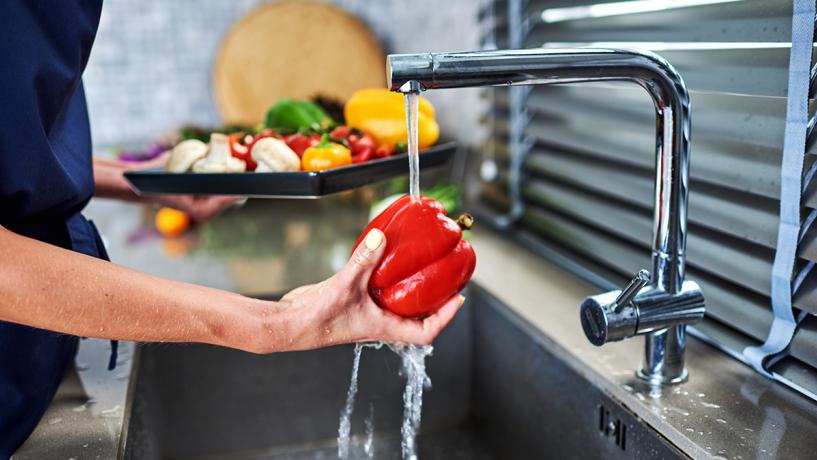
There are approximately 4 million cases of food-borne illness in Australia every year. Of these cases, there are over 31,000 hospitalisations, 86 deaths and 1 million doctor visits. Food-borne illness is a serious health issue that is caused by dangerous bacteria, viruses and parasites contaminating food. This contamination can come from a variety of sources such as contaminated water or soil on a farm, contaminated processing lines at a food plant or unsafe food handling practices at a grocery store or food service business. Because there are many different ways that food can become contaminated, those who work in the food industry must take food safety seriously.
Fruits and vegetables can cause outbreaks
When people think about foods that could potentially give them food poisoning, they often think about certain high-risk foods. These foods include meat and poultry, eggs, dairy products and seafood. These food items are potentially-hazardous foods that can cause food-borne illness if not kept within a certain temperature range to minimise bacterial growth or the formation of toxins that can cause food poisoning.
However, it is not often acknowledged that fruits and vegetables can also become contaminated. In fact, fruits and vegetables have been the source of many food-borne illness outbreaks in recent years, such as the outbreak of Salmonella havana linked to sprouts, and a Listeria outbreak linked to rockmelons.
The risk with fruits and vegetables is that fresh produce can become contaminated in many ways such as:
- by animals on a farm
- by the soil or water during growth
- by food workers when harvested
- during transportation
- by food workers at a grocery store
- during preparation at a food business
- by food preparation surfaces in a food business
In order to prevent a food-borne illness incident at your food business, it is important to follow food safety measures, including washing fruits and vegetables before preparation.
How to wash fruits and vegetables
Washing fruits and vegetables before preparation is a key way to remove any visible dirt or harmful pathogens that may be residing on the fresh produce. The steps are as follows:
- Clean and sanitise the sink and any other food contact surfaces/utensils to be used.*
- Wash your hands using the correct hand washing method (for 20 seconds with water and soap).
- Cut away any damaged or bruised areas on the fruit or vegetables before handling or preparing.
- Rinse the produce thoroughly with plain running water before peeling.**
- If needed, use a clean vegetable brush to scrub the rind of firm produce, such as melons.
- Dry the produce with a paper towel.
- Place peeled or cut fruits and vegetables on a separate clean plate or container to prevent them from becoming cross-contaminated.
- Clean and sanitise the sink and any other food contact surfaces/utensils used.
*According to Food Standards Australia New Zealand (FSANZ), a sink is considered a food contact surface when it is used to wash fruits and vegetables. It must be cleaned and sanitised before being used to clean and wash food. It is also important to remember that it is against the law to use the hand washing sink for anything other than hand washing. Do not use the hand washing sink to wash food.
**Due to the coronavirus pandemic, there has been an increase in the use of detergent or other soaps to clean fruits and vegetables. This stems from the concern of contracting COVID-19 from the surface of products. To date, there is no evidence that COVID-19 has been contracted from unwashed fruits, vegetables or other food items. However, the concern still persists and is causing people to potentially harm themselves or others by using soaps or detergents to wash fresh produce. This can cause chemical contamination of food and can cause food-borne illness if chemically contaminated food is eaten. Only rinse fresh produce in plain running water.
Food safety training
The proper handling of food, such as fresh fruits and vegetables, is a key part of food safety training. Food businesses are legally required to ensure that all their Food Handlers are trained in food safety. Not only is this a legal requirement, but it is essential to ensuring food safety in the business and preventing food-borne illness outbreaks.
AIFS provides food safety training for all levels of responsibility in a food business, including the nationally recognised online Food Handler course and Food Safety Supervisor course.
Find out more information about our nationally recognised food safety courses.





